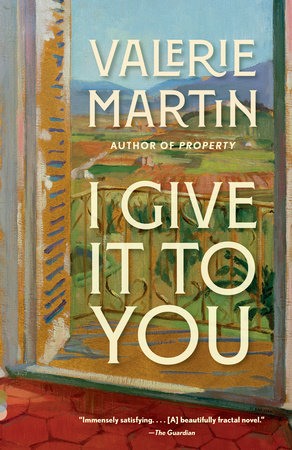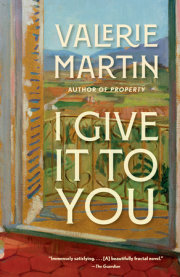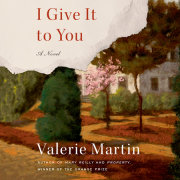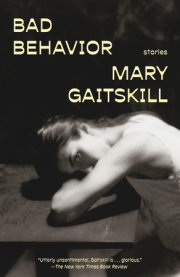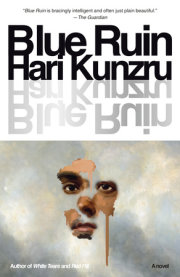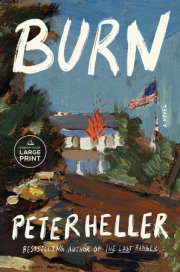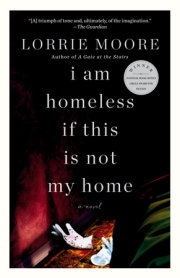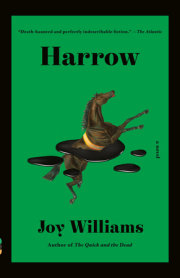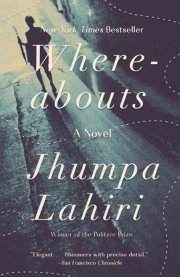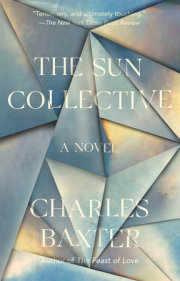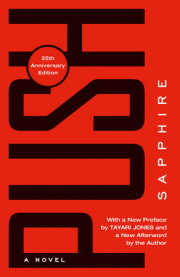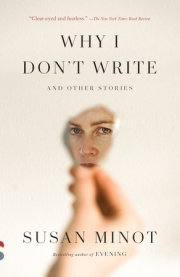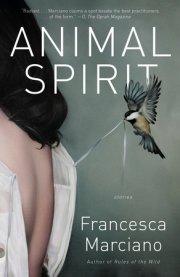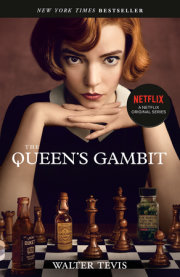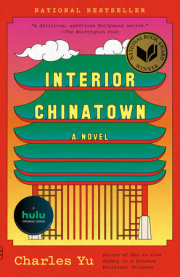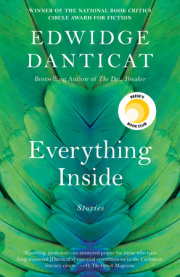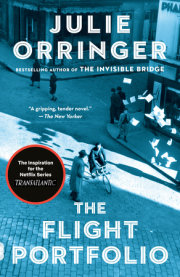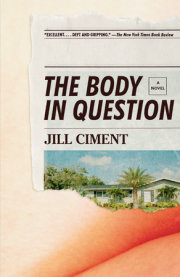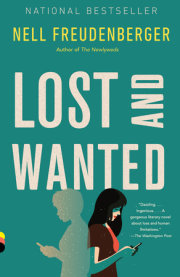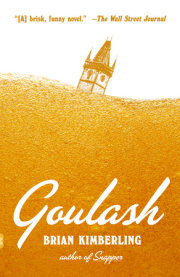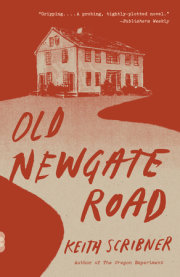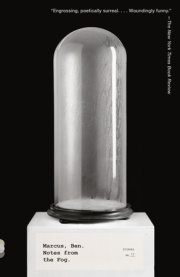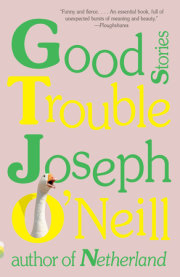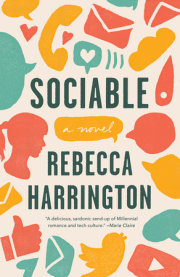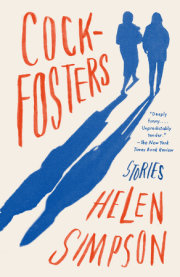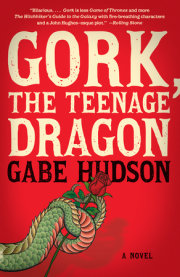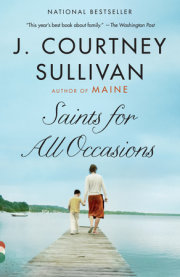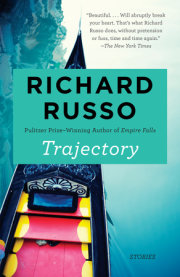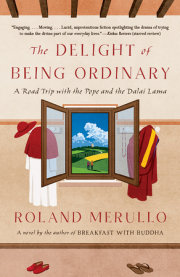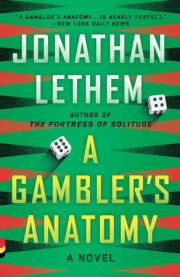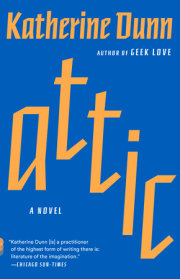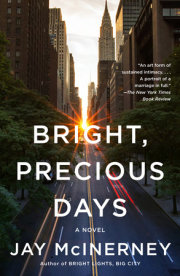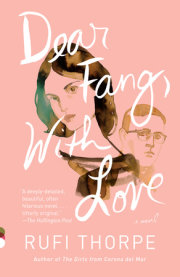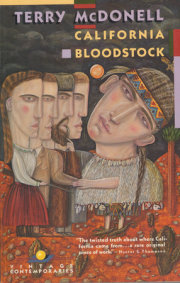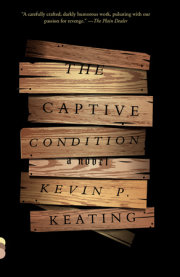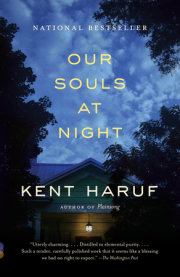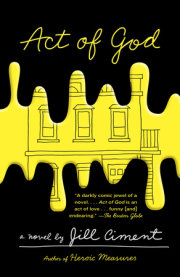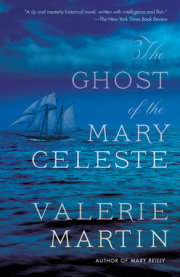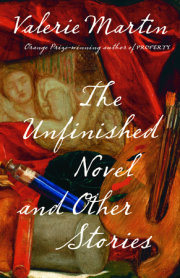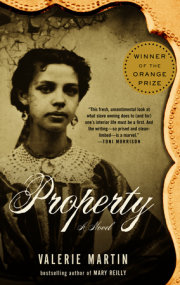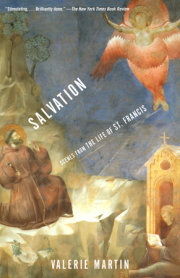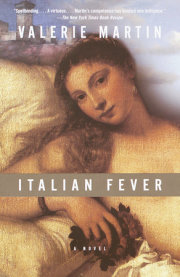PART 1
Villa Chiara
Villa Chiara is protected from the world outside by a high stone wall and an ancient gate with the initial S swirled in iron on each wing. The dusty, sunstruck road, scarcely wide enough for two small cars to pass each other without knocking their mirrors, cleaves to the wall for half a mile. On the far side, ranks of iconic sunflowers stand at attention like stolid soldiers, indifferent to the elements, awaiting their orders.
When you turn in to the gates, what strikes you is that, though very near the road, the sparse yard that serves as a parking area feels private and cool. This gravel and packed-dirt patch is closed on four sides. On two, gardens of roses and herbs, backed by plum and apricot trees, disperse gentle fragrances into the hot afternoon air. Parallel to the gate, the charming limonaia stands with its back to the wall. Glass and verdigris copper doors glint beneath the shelter of the rafters, which extend over a small stone terrace. Artfully placed hip-high pots of rosemary and lemon trees create a cool and semiprivate sitting area.
On the fourth side, the imposing pale pink facade of the villa closes in the drive. A graceful triangular double staircase rises from two directions to a wide landing before the arched manorial door. The villa has three floors. The lowest, behind the staircase, is the cantina, an unfinished space used to store farm equipment as well as wine and olive oil, both products of the property. The two upper levels are lined with tall shuttered windows looking out over the drive. The house isn’t grand but rather grandly substantial, and because of the perimeter wall it is impossible to view it from any distance. The Villa Chiara thus creates for itself an encapsulated space, peaceful, retired, without views.
I arrived at Villa Chiara a week before I met its owner, Signora Beatrice Salviati Bartolo Doyle. I knew only a few facts about her. She was employed as a professor of Italian at a small college in upstate New York. When she wasn’t in America, she lived in the villa with her aged mother. Obviously she had, at some point, married a man of Irish ancestry. She had a grown son, David, who resided in Munich with his German wife and their baby son. She had spent some years in Los Angeles when her son was a child. She rented out a small apartment at the villa, but only to tenants recommended by friends. I was fortunate enough to know one of these, Ruggiero Vignorelli, who was a colleague at my own college in Pennsylvania.
The apartment, created from the limonaia, an outbuilding designed to shelter citrus trees in the winter, comprised a kitchen and sitting room on the first floor, a large airy bedroom and minimalist bath—the shower was an open tiled area with a drain and a showerhead—on the second. Signora Doyle had renovated it for her son and his wife so that they might have more privacy when they drove down from Munich to visit. It was the first of many decisions about her property that suggested a lack of foresight. In a few years the couple would have two children and the space would be too small.
On my first visit, in the summer of 1983, I had written instructions from Signora Doyle directing me to the far end of the villa, beyond the imposing staircase, where I was to knock at the door I would find beneath a wisteria arbor and ask for Signora Mimma, Signora Doyle’s cousin, who lived there and would give me the key to the apartment. I had very little Italian, but I hoped it would be sufficient to see me through this simple task. I parked my rental car in the drive facing the villa and easily spotted the wisteria bower and the door. There was no bell, so I rapped sharply three times on the dark wood, waited until I had counted to fifty, and rapped again. I heard footsteps dimly, slowly approaching, and then the door slid open and a chubby white-haired crone peered out at me, squinting as if I gave off light. “Buongiorno, signora,” I said. “Sono qui per prendere la chiave dell’appartamento di Signora Doyle.”
She gave me a pert perusal from head to toe, furrowing her brow and nodding slightly. I feared that, as often happened, she hadn’t understood a word I said. At last, with a polite smile, she said, “Qui non c’è nessun appartamento,” and carefully, but firmly, closed the door in my face.
There is no apartment here? Then it occurred to me that I’d forgotten to ask for Signora Mimma. But if I knocked again, the crone would surely answer and tell me there was no apartment. I wandered back to my car, opened the door, sat on the seat, and looked up at the villa.
It was clearly a venerable building; I guessed seventeenth century, with a facelift along the way. The jutting inverted V of the staircase that led to the central door had a quality of being tacked on, though certainly not recently. The entrance to the cantina wasn’t visible from the drive, as the stone stairs formed a deeply shaded archway that hid it from view.
The roofline of the villa took a step down at the far end and jutted out, making an L-shaped wing covered with the same pale pink plaster. The door I had been directed to, beneath the wisteria arbor, stood flush to the ground and opened into a stone-floored entryway. In the moment when I had seen it, this entrance appeared to me cool and inviting. The second floor had smaller windows and must have lower ceilings. Perhaps this wing was the original structure. In my observation, money often served to raise the rafters of a house. When families grow wealthy and powerful, they need more headroom.
The villa seemed to be of two minds, one noble, chilly, and serious, the other homely and cozy.
Nothing moved, nothing breathed. And then a bird streaked out from one of the three cypresses that guarded the gate and disappeared beneath the rafters of the limonaia. I got out and followed the bird to the glass door. Should I try it? I stepped into the cool shade. I could see through the doors to the sitting room. Terra-cotta floors, solid-looking furniture, a good table and two chairs, a few steps at one end leading to the upper floor. I allowed my hand to stray to the door handle, pressing it down tentatively. It was locked. I backed out into the drive and looked up at the ovoid windows of the second floor. My Tuscan apartment.
I heard the crack of a door opening, and then a pleasant female voice called out, “Signora, signora.” I turned to find a robust, handsome woman with an abundance of dark hair tied up in a knot on her head, wearing what my mother used to call a housecoat. She held out one hand as she approached me eagerly. “La chiave,” she said cheerfully. “La chiave.”
“The key,” I called back to her. “Bene. Grazie. Mille grazie.” We met halfway across the drive and she pressed the key into my hand. “Lei è Signora Mimma?” I said.
“Mi chiamo Anna,” she said.
So the other one was Signora Mimma, the cousin of Signora Doyle.
Later I learned Anna’s full name, Anna Falco. She lived with her husband, Sergio, in a stone house across the road from the villa, and her family had been in service to the Salviatis for generations. She was housekeeper, cook, and caretaker of the villa. Sergio kept the gardens, served as an all-around handyman, and supervised the hiring of locals for the yearly harvests of grapes and olives. They had one grown son, Leonardo, who was a bank clerk in the nearby spa town of Rapolano Terme. He had never married and still lived with his parents.
Anna led me back under the eaves of the limonaia and watched as I turned the key in the latch and yanked at the handle. “La tira su, signora,” she said, pushing up at the air with her palm. I pulled the handle up and the door opened.
Inside she showed me the small kitchen, demonstrated how to turn on the gas stove, opened the refrigerator to reveal an unlabeled bottle of wine and a triangle of hard cheese wrapped in a towel. She gestured to a loaf of bread covered with a cloth on a sideboard. I repeated the word grazie with several degrees of sincerity, delight, appreciation, and helplessness. Each time she nodded and replied softly, indulgently, “Prego.” Then she brushed her palms together, as if at the completion of a job well done, nodded at me with an expression of finality, and slipped out the door. I followed, taking the key from the lock and closing the door behind her. I stood watching as she crossed the drive and briskly disappeared under the arbor. I was on my own.
I had signed a month’s lease with Signora Doyle and paid the last installment before I left the States. In her final letter, which included directions to the villa and instructions about the key, she had advised me that she would be arriving on the second week of my stay. She knew I was a professor at a small college and that I had published a few mildly successful works of historical fiction. She concluded her message lightly: “I look forward to meeting you and reading your work. If you are looking for old stories, of course, you know you are coming to the right place.”
In my first week at the Villa Chiara, I spent the mornings in the apartment, drinking tea, eating fruit and bread, reading simple Italian stories, and struggling with grammar exercises in an Italian text until noon. Then I drove out to the various hill towns for long meals on the terraces of restaurants with views that lifted my spirits like angels’ wings. After this I toured the local museums, churches, and—those favorite haunts of the historical novelist—graveyards. Some of these included discreet monuments in fenced areas listing the names of those who had died on the battlefield in the last war. In a general way, I knew the story.
Italy didn’t enter World War II until June 10, 1940, when Mussolini stepped out on his balcony at the Palazzo Venezia and declared hostilities against “the reactionary democracies of the West.” By that time, France, Belgium, Luxembourg, the Netherlands, and Norway had surrendered to Hitler’s armies and were occupied by German forces. The next day Britain responded by bombing Turin, Genoa, Naples, Milan, and Taranto, all centers of industry and transportation. Francisco Franco sent Mussolini a congratulatory message from Spain. Mussolini believed the war would be over in a few months.
By this time many Italian antifascists had fled to the hills, often to avoid conscription into the army. They lived in forests and caves, scavenging for food from local farmers. These were the partisans, comrades who lived and fought by stealth, much admired by the local villagers for their courage and their fraternal spirit. As is often the case in wars, when the fighting was over, a majority of survivors claimed to have secretly supported the winners. Once it was clear that the Germans would be defeated and Mussolini’s fascist government would fall, minor functionaries all over the country changed their stripes and their allegiance and joined the partisan forces. Italian soldiers abandoned their units; they too sought refuge with the partisans.
Mussolini’s fall from power was swift and then slow. After twenty years of calling all the shots, he was removed by a vote of the council he had himself created and arrested by the king, who appointed a new prime minister. This new government spirited the Duce away to an alpine resort-prison and immediately surrendered to the Allied forces already swarming up the peninsula from Sicily. Overnight these invaders were transformed from enemies into liberators. Italian troops were disbanded. Whole units were taken prisoner by the occupying German forces and sent to “work camps” in Germany. Those who escaped joined the antifascists in the hills, where they resolved to do whatever they could to make the German retreat from the south difficult and, if possible, fatal.
Hitler wasn’t ready to give up on Mussolini, his friend and mentor in the maniacal business of total despotism. He rescued the Duce from the mountaintop and installed him in luxurious lodgings on Lago di Garda, creating a protofascist state called the Republic of Salò, where diehard Italian fascists now flocked to support their obviously lost cause. Italy had effectively no government or two governments, depending on how you looked at it. The country devolved into a state of civil war. Major cities—Rome, Florence, Milan—were occupied by Germans intent on a scorched-earth policy as they retreated from the Allies. Everyone on every side knew what the end would be, and that it would be brutal.
Nowhere was the moral confusion attendant upon the defeat of the Axis powers as thoroughgoing as it was in Italy. In the final days of that horrific war, few could call themselves heroes, but all were called upon to muster whatever courage they could find just to stay alive.
The end had plunged the country into despair. Was that why I found so few memorials to the glorious fallen in Tuscan graveyards? Italy hadn’t just surrendered; she changed sides entirely. These days no one talks about it, but those who can remember know perfectly well that the American forces landing in Sicily weren’t charged with liberating innocent citizens of a besieged democracy. They were coming to kill Italian fascists.
One evening in the second week of my stay, as I turned in at the gate in my rented Fiat Panda, a reliable machine I had come to think of as a friend and which I addressed as Signor Panda, I discovered a battered Fiat Cinquecento parked close to the staircase of the villa. My landlady had arrived. Doubtless she had just made a long transatlantic journey and being, as she must be, a woman in her fifties, she surely looked forward to a quiet evening and an early bedtime. The sun was setting; it stayed light until well past the dinner hour, and I had my own plan in place: a dish of pasta, a bottle of local red wine, and a notebook in which each evening I organized impressions, facts, and details of the day’s excursion. I also looked forward to an activity now sadly lost to the civilized world, writing a long letter to a friend. From the table where I worked I could see the villa staircase, and as I finished my meal I watched Anna Falco come out of the cousin’s door carrying her big basket. She held the handles close to her chest in the crook of her arm and ascended the staircase, letting herself in at the door, which was evidently unlocked. Dinner for the padrona, no doubt. How pleasant it must be to return to your villa and have a fine meal delivered to you, your bed already made and the sheets turned back, the palatial rooms clean and welcoming, all comfort and quiet in your sweet world of privilege.
But then it occurred to me that Signora Doyle wasn’t alone; she lived with her mother. Her ancient mother, as my colleague Ruggiero had described her. I had spotted this wizened lady a few times in the past week, dressed all in black, carefully descending the stone steps, one hand gripping the rail, the other wrapped around the curved handle of a black cane with a rubber tip. With slow but surprisingly sure steps, she crossed the drive and went in under the arbor. Presumably she dined with the cousin. But now that her daughter was home, dinner came to them. The reunion of mother and daughter must be an occasion much anticipated by both.
Later, as I was on the third page of my letter and the last third of my bottle of wine, lights went on in the villa. Dim lights, to be sure, scarcely enough to read by. And then, dissolving in the night as a cube of sugar does upon the tongue, with irresistible sweetness, there came ethereal music. I recognized it at once. Beethoven, String Quartet No. 14 in C-sharp minor. A night bird tweeted a soft triplet from the garden. I smiled as I took up my pen. The bird was in the right key.
All around me German music harmonized the still Italian air, charming the birds right out of the trees on a mild summer night in Tuscany.
Copyright © 2020 by Valerie Martin. All rights reserved. No part of this excerpt may be reproduced or reprinted without permission in writing from the publisher.

